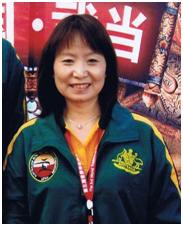What is Wushu?
Experience the dynamic world of Chinese martial arts in Sydney with Wushu, commonly known as Kung Fu in the West. At our training venues, we offer comprehensive programs tailored to both Wushu and Kung Fu disciplines, catering to enthusiasts of all levels.
Wushu encompasses a diverse array of martial arts practices, emphasizing concentration, agility, and explosive power. Our training regimen focuses on both taolu (forms performance) and sanda (combat sport), providing a holistic approach to martial arts training.
Taolu, divided into modern and traditional categories, showcases the artistry and athleticism of Wushu through intricate routines and techniques. Modern Wushu features standardized competitive routines, incorporating elements from various martial styles, while traditional Wushu emphasizes authentic techniques and self-defense skills.
Beyond the competitive arena, Wushu offers numerous benefits, including improved fitness, strength, and flexibility. Through dedicated practice, students cultivate discipline, confidence, and mental fortitude, enhancing their overall well-being and self-awareness.
Join our vibrant community of martial arts practitioners in Sydney and embark on a journey of self-discovery and physical mastery. Whether you’re drawn to the athleticism of Wushu or the traditional techniques of Kung Fu, our experienced instructors are committed to helping you reach your goals and unleash your full potential.
[embedyt] https://www.youtube.com/watch?v=io5-sPCFEJg[/embedyt]
Styles of Wushu
Modern Wushu
Modern competitive wushu is composed of two disciplines: taolu (bare hands, duel events known as duilian, short and long weapon forms and sanda/contact sparring. The common taolu forms are categorizsed as follows:
Bare Hands
- Changquan (Long Fist)
- Nanquan (Southern Fist)
- Taijiquan (or Tai Chi Chuan)
Short Weapons
- Dao (single edge broadsword)
- Jian (double-edged straight sword)
- Nandao (Southern single-edged sword)
- Taijijian (Taiji double-edged sword)
Long Weapons
- Gunshu (staff)
- Qiangshu (spear)
- Nangun (Southern cudgel)
The forms comprise basic wushu movements such as throwing fist, push palm, heel kicking, jumping and sweeping in combination with stances such as the horse stance, push down and bare hands sparring. The taolu form can also be modified for competition to highlight the competitor’s strengths. Modern wushu competitors are increasingly training in aerial techniques such as 360, 540 and 720 degree jumps and kicks to add more difficulty and style to their forms.
In contemporary times, wushu has become an International Competitive Sport administered through the International Wushu Federation (IWUF), which holds the World Wushu Championships every two years. The first World Championships were held in 1991 in Beijing. The latest (Thirteen) World Championships was held in Jakarta, Indonesia in 2015.
Traditional Wushu
Like Modern Wushu, Traditional Wushu encompasses a large variety of different styles including barehand and weapons from Southern and Northern Shaolin, Wing Chun, Bajiquan, Fanziquan, internal styles like Taijiquan, Xingyiquan, Baguazhang and many more. Unlike Modern Wushu, Traditional Wushu routines can generally be choreographed by the practitioner and their coach without set movements and do not include scores for degree of difficulty (nandu) for additional acrobatic moves. More recently however, prescribed competition forms for events like Taijiquan, Xingyiquan and Baguazhang have become more prevalent in competition.

